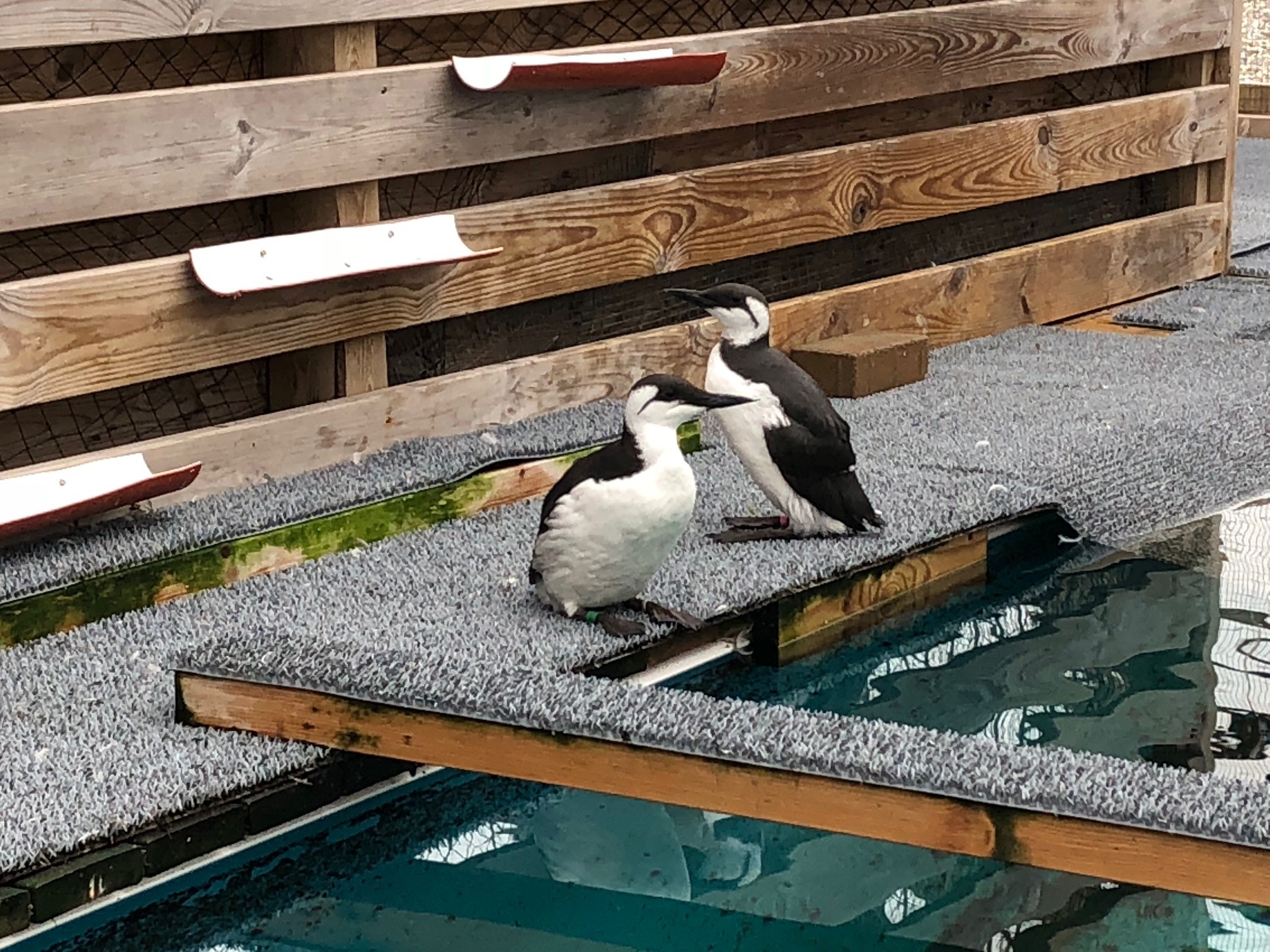Hearing and noise impacts in Seabirds
Birds are well-known for their acoustic communication and their hearing abilities have been intensively investigated for decades. Yet we know little regarding the hearing of marine birds which comprise ca. 4% of all avian species. This is perhaps surprising as seabirds are conspicuous top-predators, that fill important niches and are thought be sentinels of ocean change; thus, understanding their sensory ecology is an important part of understanding coastal ocean communities.
Examining bird hearing is important given the growing realization that anthropogenic noise is encroaching on bird habitats and impacting species in myriad of ways. The Auk (Alcidae) family of seabirds is facing substantial pressures. At least one species is now extinct, the great auk (Pinguinus impennis), and populations of several other species are listed as Threated or Endangered. This includes the marbled murrelet (Brachyramphus marmoratus) and the Atlantic puffin (Fratercula arctica). Several of the stressors Auks face are noted as primary threats to seabirds in general and include habitat disturbance, development, energy production and climate change. While noise is often seen as a stressor to wildlife, the precise effects to individuals and species are often unknown or unmeasured. for most seabird species, the baseline understanding of acoustic communication is unknown, and their wide-ranging movements including extended durations of critical behaviors at sea make it difficult to conduct noise-related behavioral studies as seen in songbirds and other wildlife. Hearing data provide an opportunity to measure sound-sensitivity and offer a conservative estimate of the acoustic parameters of potential noise impacts.
This project is defining the hearing of up to multiple Auk species, including Atlantic puffins and common murres. These are key data to predict the sound sensitivity of the endangered marbled murrelet. Over the project’s timeline, we will conduct comparative in-air physiological and behavioral audiometry tests to outline the frequencies and sound levels to be used in the subsequent underwater tests. Comparative anatomy studies are including micro-CT help define and compare auditory anatomy across related taxa. These results will help ground-truth the underwater data and address potential Auk underwater auditory adaptations. Soundscape datt from the puffin rookery habitats help place the hearing in contact with the environment and bird calls. The resulting audiograms will provide the data and training foundation for a temporary threshold shift (TTS) response feasibility study.
Team members for this project include: Aran Mooney, Adam Smith, Song, Jim Michaelson and external collaborators including Magnus Wahlberg, Kirstin Anderson Hansen, and Ole Larsen. Work is funded by the US Navy’s Living Marine Resources Program.



